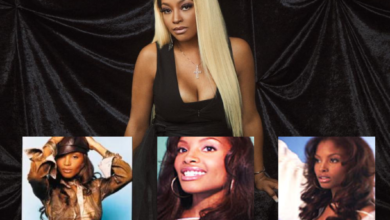New Exhibition ‘Hip Hop: Conscious, Unconscious’ | Celebrating 50 Years of Hip Hop
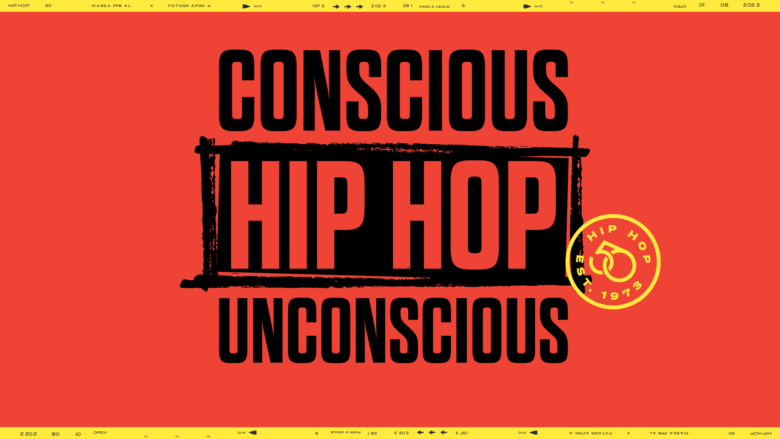
Mass Appeal is partnering with Fotografiska New York to create a new exhibition that traces Hip-Hop‘s origins—starting in the Bronx in 1973, as a social movement by-and-for the local community of African, Latino, and Caribbean Americans—to the worldwide phenomenon it has become 50 years later.
“Hip Hop: Conscious, Unconscious” amplifies the individual creatives involved in the movement while surveying interwoven focus areas such as the set of women who trailblazed amid hip-hop’s male-dominated environment; hip-hop’s regional and stylistic diversification; and the turning point when hip-hop became a billion-dollar industry that continues to mint global household names.
Over 200 photographs, dated from 1972 to 2022, traces the rise and proliferation of hip-hop through five decades of work from the trailblazing image-makers who helped codify hip-hop as the most influential pop culture movement of its generation
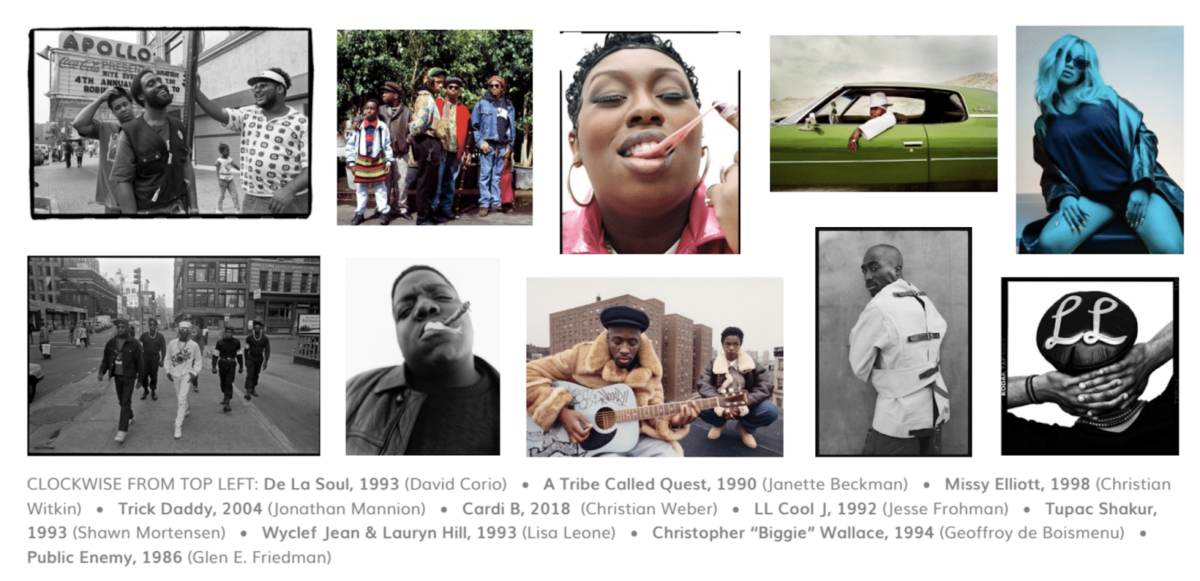
Ranging from iconic staples of visual culture (presented with new context) to rare and intimate portraits of hip-hop’s biggest stars, the works on view traverse intersecting themes such as the role of women in hip-hop; hip-hop’s regional and stylistic diversification and rivalries; a humanistic lens into the 1970s-Bronx street gangs whose members contributed to the birth of hip-hop; and the mainstream breakthrough that saw a grassroots movement become a global phenomenon.
The exhibition, which was created in partnership with Mass Appeal and Chase Marriott Bonvoy, will debut at Fotografiska New York before traveling to several of Fotografiska’s international locations including Fotografiska Stockholm and Fotografiska Berlin.
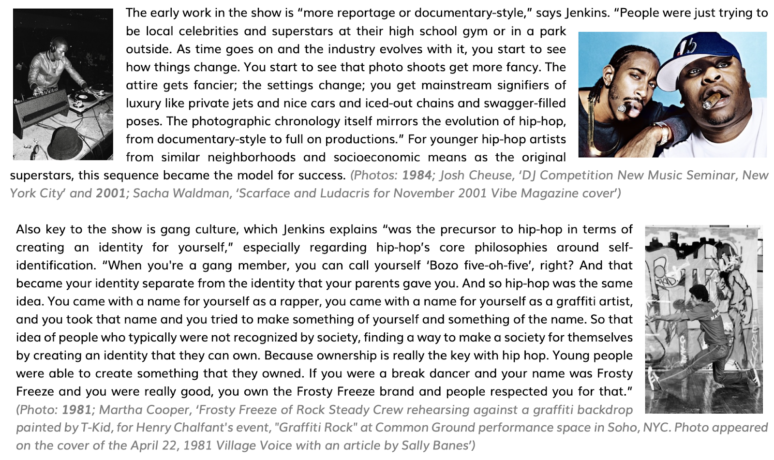
The subject matter of Hip-Hop: Conscious, Unconscious spans the “four elements of hip-hop” (rapping, DJing, breakdancing, and graffiti) and several debated “fifth elements” including fashion and beatboxing, The exhibition brings audiences through five decades of history, culminating in recent imagery of the biggest names working in hip-hop today.
In addition to dozens of vibrant images of anonymous subjects engaged in the grassroots hip-hop culture of the 1970s and 1980s, solo portraits and group photos on view in the exhibition include a wide array of Hip Hop’s talent since 1973.
Alongside group photos, individual portraits are often placed in thoughtful proximity that draws new connections and nodes of reflection; Missy Elliott and Pharrell Williams, for instance, went to the same high school in Virginia several years apart, and therefore experienced similar formative influences despite not knowing each other at the time.
Artists in the exhibition include hip-hop’s earliest documentarians of the 1970s to younger photographers of hip-hop’s next generation.

“It’s easy to forget that there was a time before hip-hop was an industry and before it made money,” states Sacha Jenkins, exhibition co-curator and Chief Creative Officer of Mass Appeal. “It wasn’t conscious of itself. It was just existing with young people living their lives, dressing as they did, trying to entertain themselves with limited resources and creating an aesthetic that registered amongst themselves. It wasn’t for the world; it was for a very specific community. Then there was an exponentially paced transition where hip-hop culture became a conscious of itself as an incredibly lucrative global export. The exhibition’s lifeblood is the period before hip-hop knew what it was.”
The exhibition brings audiences through five decades of history, culminating in recent imagery of the biggest names working in hip-hop today. The show, which features archival ephemera to augment the contextualization of its photography, is principally laid out by chronology and geography. Focus areas include but are not limited to the early years, East Coast, West Coast, the South, and the newer wave of artists who have emerged since the mid-aughts.

Among other interwoven themes, the exhibition highlights geographic subcultures; East Coast/West Coast rivalries; and the role of women in hip-hop. Fifteen of the female pioneers who trailblazed in various capacities amid a male-dominated environment are included in the show:
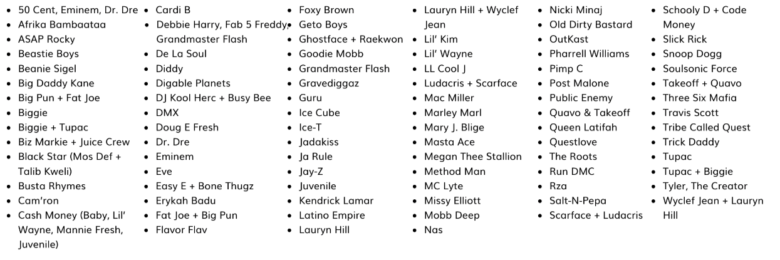
“We made a thoughtful effort to have the presence of women accurately represented, not overtly singling them out in any way,” states Sally Berman, the exhibition’s co-curator, who among other roles has helmed photo direction for Mass Appeal and XXL. “You’ll turn a corner and there will be a stunning portrait of Eve or a rare and intimate shot of Lil’ Kim that most visitors won’t have seen before. There are far fewer women than men in hip-hop, but the ones that made their mark have an electrifying presence—just like the effect of their portraits interspersed throughout the show.”

Alongside portraiture of formative names such as DJ Kool Herc, Afrika Bambaataa, and Grandmaster Flash, documentary images of the larger cultural climate (such as the Savage Skulls street gang, graffiti writers, and block parties) capture the zeitgeist of the Bronx that permeated as the first hip-hop artists innovated the musical style itself. Examples of bodies of work in the show include Jean-Pierre Laffont‘s oeuvre of early-1970s Bronx street culture, with a focus on the Savage Skulls; Henry Chalfont‘s early-1980s images of Brooklyn, Bronx, Queens, and Downtown Manhattan, with a focus on graffiti writers, breakdancing, block parties, and youthful shenanigans; and Janette Beckman‘s late-1980s to early-1990s street-style portraits of hip-hop’s living legends.




